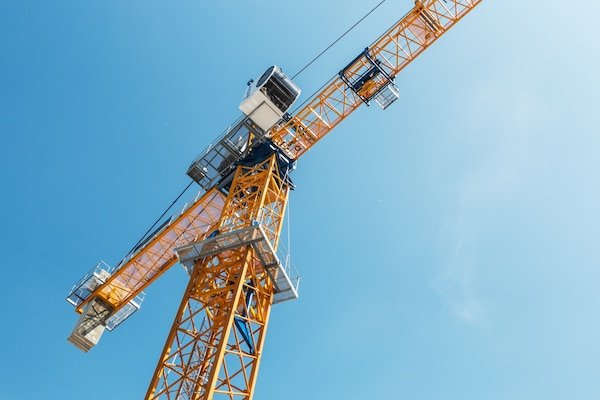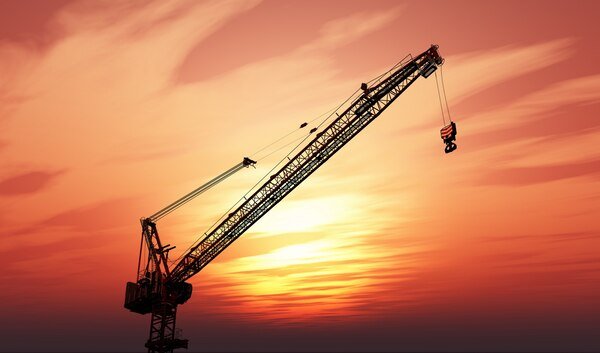
Investing in the services of lifting equipment specialists is more than just a good idea. It can be the differentiating factor between an industrially-focused activity characterised by increased profits and one that struggles to break even. Why should you invest in an industrial crane? Well, the answer to this question will largely depend on the sector in which you’re present, the budget you are working with, and the developing perspectives of your company.
Are you, for example, focused on the manufacturing sector, and are your employees facing difficulty in managing and transporting the raw goods necessary for the continuation of your operations? If so, a heavy-duty crane can be the best way to streamline your day-to-day tasks, save up on maintenance costs, and reduce congestion in the industrial setting. Heavy-duty cranes could help your business meet the safety standards imposed in your field, significantly reduce the workload of your employees, and are, in almost all cases, characterised by a positive ROI.
A Versatile Solution for Heavy-Duty Problems
The global market for industrial, heavy-duty cranes and lifting equipment is on a constant rise. Why is that? Well, it’s enough to look at the 21st-century global trade forecasts. Our world is getting more interconnected than ever, and the transportation and management of heavy-duty loads has transformed into an issue tackled by the vast majority of entities involved in the industrial complex. The industrial crane you purchase now might seem like an investment for the future. However, the modifications associated with your field might determine your purchase to contribute to a positive ROI in just a few short years.
In an industrial setting, the most important thing is productivity. And one of the best ways to improve it is to invest in specialised cranes designed and maintained by lifting equipment specialists. Where can such equipment be utilised? Pretty much in any industrial setting in which the transportation of heavy-duty loads is commonplace. From the automotive industry to construction, port logistics, steel mining, aeroplane manufacturing, or the development of oil drills and off-shore platforms, the utilisation of heavy-duty cranes has now become widespread.
Sure, professional, heavy-duty cranes with capacities exceeding 10 tons are expensive investments that could necessitate an upfront cost of tens of thousands of dollars. But, when we take into consideration the productivity benefits associated with work operations, buying such a crane is, in almost all cases, worth it. Are they for everyone? No. Heavy-duty cranes are associated with specific use cases for which forklifts or manual labour are not feasible. However, if you are active in an industry that requires them, overhead cranes designed by lifting equipment specialists could be quintessential for your operation’s feasibility.
What Will Impact the Industrial Crane’s Price?
That’s the golden question, isn’t it? To put it simply, the overall costs of the overhead crane you need to purchase will be determined by the distance between the crane’s centerline and runaway rails. More distance between the rail means more weight, more materials used in the construction of the girders, and also a greater capacity to carry heavy-duty loads. In other words, the bigger and more robust the crane is, the more you will have to pay for its capabilities. What’s appropriate for your industrial setting will be determined by the lifting equipment specialists you contact.
Single girder cranes, with capacities under five tons and with spans of less than 12 meters, should typically necessitate an investment of less than $50,000. However, for heavy-duty applications, such cranes are usually not enough. Do you need more carrying capacity? If so, your applications will probably require a double girder crane, which could significantly increase costs. But, these price points typically only apply to bridge cranes, which are attached to the interior structure of a building. Do you need a crane that can operate with more mobility? If so, the lifting equipment specialists you’re working with might recommend a full gantry crane, which could cost upwards of $170,000.
The Main Differentiating Factor Is Your Use Case

Do you only need to use the crane occasionally for the transportation of materials under five tons? If so, you will probably only require an overhead industrial crane with a single hoist configuration (which will be cheaper). Yet, if you want to manage heavier payloads, you will most likely necessitate a more robust crane, such as one with a 30-ton double girder bridge. In the United States, overhead cranes are differentiated per the specifics of the Crane Manufacturers Association of America and come in six different classes per their maximum load capacity.
However, in the EU and Great Britain, heavy-duty overhead cranes are classified using ISO or FEM standards. More specifically, in Europe, the most common classification method for heavy-duty cranes is the Fédération Européenne de la Manutention M1-M8 ranking, which takes into account the utilisation of the crane and the maximum load spectrum it will need to handle. The M1 ranking is typically reserved for maintenance cranes that only need to handle very light loads. In contrast, M7 and M8-certified cranes are reserved for industrial settings and are capable of continuously handling very heavy loads.
One of the Best Tools for Heavy-Duty Tasks
Let’s assume, for instance, that you are managing a factory involved in the production of steel components. Naturally, the hall or complex in which the factory’s operations are conducted will be quite crowded, which can be a recipe for disaster, especially when heavy-duty loads are involved. An industrial crane can be an efficient way to keep the floor of the industrial complex free from excess equipment and personnel, thus minimising the risks of incidents that will put the workers in danger.
When designed and installed by lifting equipment specialists, heavy-duty cranes are precise and sophisticated tools that can ensure the transportation of fragile goods. Plus, overhead, heavy-duty cranes are customisable and can range in size and purpose, often representing a financially advantageous choice, even for growing industrially-focused enterprises. They are indeed a significant investment that will require the specialisation of industry professionals for their installation. Yet, for specific industries, heavy-duty cranes can be of utmost necessity.